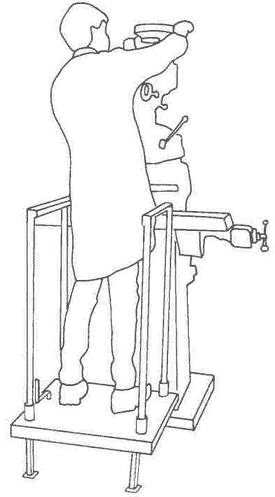Brands on the Run: Love Marks
At the bookstore the other day, I ran into the coffee table sized tome "Love Marks", another book ostensibly providing expert criticism containing thinly veiled consultation tips. The book is constructed like a string of advertising copy loosely flung together and binded. On the first page, a glass filled halfway sits on a table over the words,
"I was born an optimist".

Love Marks posits that branding is not based on manipulation or complex narratives but on deep, abstract emotional associations. The most important brands, author A.G. Lafley suggests, are ones that create an inscrutable emotional appeal for consumers. Consumers feel a loyalty that they can not explain, something usually reserved for family or friends. Lafley cites Apple as an example of a brand that has a cult-like following, whose consumers view it as means of self-identification. The rest of the book is a combination of self-help book and marketing primer; "love yourself, and the money will come!" If we remove any reference to brands, the book reads like a dating manual. Tips include creating an aura of "mystery, sensuality, and intimacy". This aproach will help to take brands to "the next level" after their current power is depleted by the "attention-economy". Is it self-evident that you can't provide a manual on how to create something that is "beyond reason?" I suppose not. "Love Marks" advocates corporations to act more and more like people, not in a legal and regulatory sense, but in the emotional, and even romantic sense.

Whereas brands are constructed personae that corporations can send out into the world to mediate information and concepts in a way that lay-folk understand, "love marks", another way of saying "ultra brands", are romantic laisons that project the consumer's emotional appeals onto their product. Douglas Holt, breaking down the ultimate nature of brands and the message/sender/receiver problem, suggests that brands need not be created by either consumer or producer but that they exist as a connection between the two, with each party providing their respective lexia. Advertisers attempt to shape and mold brands in a way that mediates consumers' emotional energy and sensory appeal-it's the difference between using a rubber band and a copper wire to conduct electricity. "Love Marks" advocates self-help techniques, honesty and authenticity as necessary in building a better copper wire and catching the emotions of consumers.
Holt's vision is close to Stuart Hall's encoder/decoder model. Consumers and Producers use their own models to encode and decode the information within the brand. The hope of advertisers is that the brand is the only medium by which the consumer can communicate with it. Television news, newspapers and and investigative research aren't factored into sending/receiving model of the brand unless they absolutely have to be. That is, unless a scandal arises that must be addressed or alluded to within the brand. Everything about the semiotics of branding depends on producers' idea of "public perception" and the relative concept of authenticity, which is why so much depends upon newer and often stranger forms of market research.

One of the ironies of the Love Marks book is that, while it claims to invent a new form of marketing separate from the category of "brands" the difference between "brands" and "Love Marks" is a form of branding. "Love Marks" the book is an attempt to brand the consultancy firm Saatchi and Saatchi, who invented the concept after a slew of market research a few years ago. In the collapse of many "cool-hunting" brands like Look-Look and Youth Intelligence, advertising agencies, always willing to obscure actual data and create elaborate self-serving narratives, try to re-brand branding. I call the languages of branding and their method of relating to consumers "Brand Logic". This is a take on Douglas Holt's term "The logic of branding". While it's cleaner to assume there is a singular logic of branding, the truth is that their are many Brand Logics;dictated by the ever-changing market and by the specific methods of advertisers. "Love Marks" then, is not "above brands" but is rather a new Brand Logic; a new language and methodology of branding. And even this may be giving it to much credit--we might also say it's one "meta-brand" within an emerging new Brand logic.
The theme of "intimacy" inherent in Love Marks calls out some of the things that people find uncomfortable about brands. Why is this corporation, an enormous abstract entity, professing to know me? Why am I receiving warm, personal messages written by an anonymous hand in advertising copy? Why am I receiving syruppy, over-emphatic messages from an author I can not see, feel, or touch? I'm fine, but how are you, omniscient God-like Cingular Wireless narrator? Postmodern branding addresses this by pulling out the rug of authenticity, becoming self-conscious, in an attempt at appearing authentic. Love Marks proposes that marketers can only connect with consumers by becoming "honest with yourself", by augmenting the sender of the message in order to change the message. Is this "super-authenticity" really the answer to consumers' distrust of the authenticity-games played by advertisers? Is the final answer, as Holt suggests, simply to allow consumers to brand the product directly?

Brands exist because corporations are not people. Corporations are groups of people, bound by abstract concepts, handshakes, and agreements, who come together in an attempt to physically embody (or "incorporate") ideas. These behemoths lumber around our mediasphere, rumble through our streets and homes like long-dead Gods seeking ways to legitimately exist in a world full of individuals and egos. The languages they make in their attempts to define themselves are often clumsy and inarticulate, sometimes pathetic and sometimes charming, but always impossible to take our eyes off of. They are like hideous alien creatures fitting themselves into human skins, trying to walk straight, shake hands and ask us how the weather is, unaware of how grotesque and incongruent their cadence is. But no matter how strange it is, the longer they are here, the closer they are to getting it right. There is something both monstrous and beautiful about their attempts to elicit our passions and appeal to us on an emotional level.


2 Comments:
Now with comments!
I just came across your blog about Holistic Well Being to complete my work on the subject. Thanks for your thoughts!
Post a Comment
<< Home